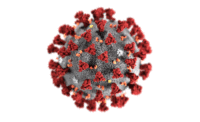The agency also wants to learn about substitutes for the ethers that employers may be using, including information on patterns of use, levels of employee exposure to the substitutes and their degree of toxicity.
OSHA chief John Henshaw noted that the current record is nearly ten years old and may no longer accurately reflect the use of these substances in the workplace.
In 1993, OSHA proposed to reduce permissible exposure limits for two ethylene glycol ethers, 2-Methoxyethanol (2-ME) and 2-Ethoxyethanol (2-EE), and their acetates (2-MEA, 2-EEA). The substances have been commonly used in the auto refinishing industry, as well as in construction paints, surface coatings, printing inks and the semiconductor industry.
OSHA estimated that approximately 46,000 workers were exposed to the ethers and the associated risks of adverse reproductive and developmental health effects.
Information submitted in response to the proposal has indicated a decline in the production of the substances and that their use in several key industry sectors may have been eliminated or is being phased out. A recent Environmental Protection Agency Toxic Release Inventory also confirms a downward trend in their production and use.
Comments must be submitted by Nov. 6, 2002. To submit comments by regular mail, express delivery, hand delivery or messenger service, submit three copies and attachments to the OSHA Docket Office, Docket No. H-044, Room N2625, U.S. Department of Labor, 200 Constitution Ave., NW, Washington, D.C. 20210. You may also fax comments (10 pages or fewer) by calling the Docket Office fax at (202) 693-1648. Include the docket number in your comments. Comments may also be submitted electronically through the Internet at http://ecomments.osha.gov.




